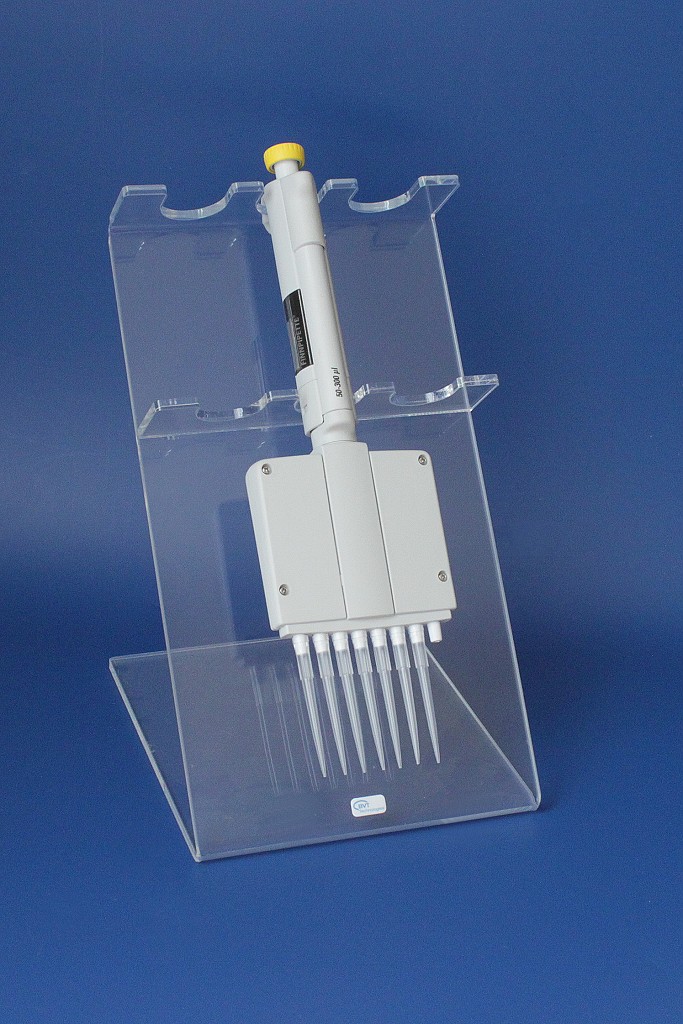Category
- Custom made glass products
- CUSTOMER SERVICES
- NEW PRODUCTS
- Sensors and electrodes
- Custom made and Modified Screen Printed Electrodes
- Stirrers
- Cables and connectors
- Cell
- Potentiostats
- Manual Screen Printer
- Minithermostat
- Pumps
- Accessories
- Kits & Sets
- Discounted SPEs (at a reduced price with visual defects/inconsistancies, but fully functional)
Pipettor Rack
The BVT Pipettor Rack is designed with user needs in mind, the design has been made to maximize bench space by using the Pipettor Rack to store pipettors when not in use. Holds up to three pipettors. Material of the rack is PMMA.
Related products
-
MDC1 Microdialysis Catheter for “in vitro” Measurement
Read moreThe microflow cell FC2 (BVT Technologies, a.s.) connected with microdialysis catheter PME011 (Probe Scientific, Ltd., UK) enables continuous monitoring of low-molecular substances in circulating blood without withdrawing blood from the tested body. (The device is not approved for human use as a whole; the microdialysis catheter has the approval for medical use).
SPE electrochemical sensors and biosensors can be enclosed in the FC2 cell – e.g. the AC1.GOD sensor for measuring glucose. The advantage of this system is the defined and sterile conditions under which the sample is fed through the microdialysis catheter to the working electrode of the SPE sensor.
The device can be also used for measurement in fermentation reactors, in subcutaneous tissues or in special scientific apparatuses. The main advantage of this catheter is in a special membrane which produces a “plasma-like” or “prefiltered sample” sample without the need for blood centrifugation or deproteinization.
MDC1 makes online monitoring of different blood parameters (biochemical compounds actual concentration or kinetics of enzymatic reactions) possible. The device is also convenient for pharmacological studies. The device can be used only for non human applications.
-
Activation furnance for electrochemical sensors
Read moreThe activation furnance is a device used for curing individual sensors of the AC1 type. At a defined temperature (up to 1000 °C) depending on the electrode and sensor materials. When the sensor is cured, the surface of the electrodes is cleaned from surface oxides and organic impurities, which results in regeneration of the sensor or its activation. In this way, for example, old sensors with immobilized enzyme layers can be cured for reuse – see example at the end ot the document.
-
Single Seat Magnetic Stirrer
Read moreSingle-seat magnetic stirrer without heating used to stir liquids with a stirring bar.
The mixing speed can be changed continuously using the rotary control: 0-255 rpm. Lightweight and easily portable, suitable for mixing liquids with a volume of up to 1 l. The magnetic stirrer includes a connector connected to a 12 V power supply.
Original design of the magnetic stirrer in two colours. Upon agreement, it is possible to produce magnetic stirrers in colours according to the customer’s wishes.
The single-seat magnetic stirrer includes two glass magnetic stirring bars (1 piece of type GMS.1 and 1 piece of type GMS.2 below). It is possible to buy more pieces of glass magnetic stirring bars.





